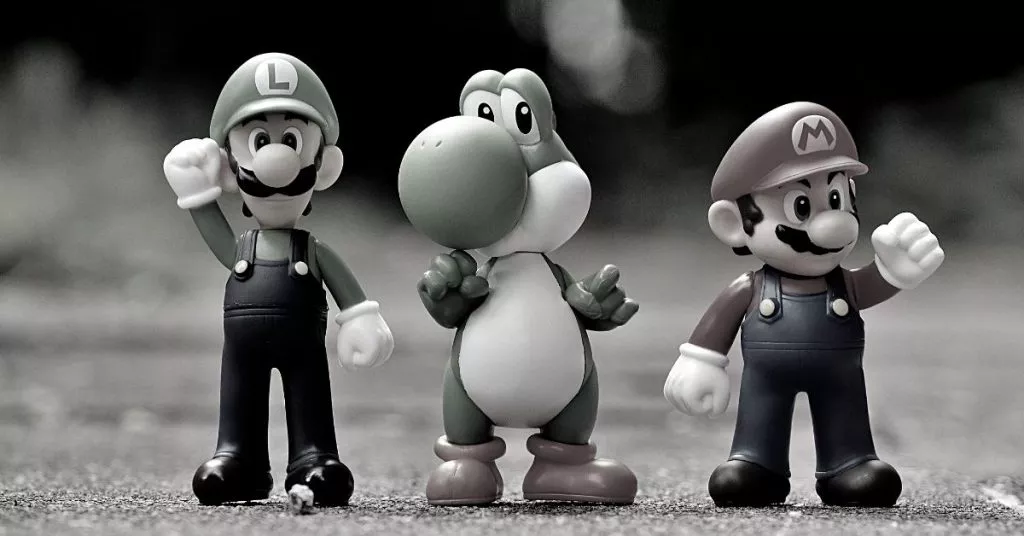Do you find yourself struggling to create characters that your readers will love?
If so, don’t worry – you’re not alone. Creating memorable and engaging characters is one of the most challenging aspects of writing a novel. But with proper planning, you can create characters that your readers will adore.
There are 2 stages to creating great characters.
You need to know who your character is, and the journey that your character goes through, i.e. their character arc.

Who is your character?
The characters you create need to be three-dimensional.
This means giving them concrete characteristics, motivations, and backstory. Otherwise, they will feel flat and one-dimensional, which will make it difficult for readers to connect with them.
It can be helpful to think of your characters as real people. Give them likes and dislikes, fears and hopes, strengths and weaknesses. The more three-dimensional your characters are, the more believable and relatable they will be.
1. What is your character like as a person
What physical traits do they have?
Physical traits can be anything from height and weight to hair and eye color.
What sort of personality do they have?
Do they tend to be optimistic or pessimistic? Introverted or extroverted? Level-headed or emotional? etc. This can help you better understand how they would react in different situations.
What kind of mannerisms or habits do they have?
Mannerisms are the small things that your character does that make them unique- perhaps they have a tell when they’re lying, or maybe they tap their fingers when they’re thinking. Habits can be anything from the way your character dresses to whether they usually speak quickly or slowly.
2. What attractive quality does your character have?
When creating a character, it can be helpful to give them an attractive quality according to Diane Callahan.
This can make them more relatable and likeable to readers. For example, you might give your protagonist a sparkling wit or your antagonist a dark, brooding intensity.
Whatever you choose, make sure it feels organic to the character. Their looks or what they wear should not be the only thing that defines them – there should be other layers to their personality.
3. What flaws does your Create Characters have?
Whether they’re the protagonist or a supporting role, every character should have flaws.
Flaws make characters more relatable and interesting, and they can help drive the plot forward. For example, let’s say you’re writing a story about a princess.
She could be brave, adventurous, and kind-hearted. But what if she also had a temper? What if she was afraid of snakes? These flaws would make her more interesting and relatable.
The idea is that readers will see themselves in her, and they would root for her as she overcomes her fears and grows as a person. You can also use flaws to create sympathy for a character – even an antagonist can be redeemable if believable motivations drive them.
data:text/html,%3C%21DOCTYPE%20html%3E%3Chtml%3E%3Cbody%20style%3D%22margin%3A0%3B%22%3E%3Ca%20href%3D%22%23%22%20onclick%3D%22window.parent.postMessage%28%26%23039%3Bseraph-accel-lzl-v%3A1%26%23039%3B%2C%26%23039%3B%2A%26%23039%3B%29%3B%22%20style%3D%22position%3Aabsolute%3Bwidth%3A100%25%3Bheight%3A100%25%3Bbackground%3Acenter%20%2F%20cover%20no-repeat%20url%28https%3A%2F%2Fi.ytimg.com%2Fvi%2FlmaVRqzgtM0%2Fmaxresdefault.jpg%29%3B%22%3E%3C%2Fa%3E%3Cspan%20style%3D%22position%3Aabsolute%3Bleft%3A50%25%3Btop%3A50%25%3Bwidth%3A68px%3Bheight%3A48px%3Bmargin-left%3A-34px%3Bmargin-top%3A-24px%3Bpointer-events%3Anone%3B%22%3E%3Csvg%20height%3D%22100%25%22%20version%3D%221.1%22%20viewBox%3D%220%200%2068%2048%22%20width%3D%22100%25%22%3E%3Cpath%20class%3D%22ytp-large-play-button-bg%22%20d%3D%22M66.52%2C7.74c-0.78-2.93-2.49-5.41-5.42-6.19C55.79%2C.13%2C34%2C0%2C34%2C0S12.21%2C.13%2C6.9%2C1.55%20C3.97%2C2.33%2C2.27%2C4.81%2C1.48%2C7.74C0.06%2C13.05%2C0%2C24%2C0%2C24s0.06%2C10.95%2C1.48%2C16.26c0.78%2C2.93%2C2.49%2C5.41%2C5.42%2C6.19%20C12.21%2C47.87%2C34%2C48%2C34%2C48s21.79-0.13%2C27.1-1.55c2.93-0.78%2C4.64-3.26%2C5.42-6.19C67.94%2C34.95%2C68%2C24%2C68%2C24S67.94%2C13.05%2C66.52%2C7.74z%22%20fill%3D%22%23f00%22%3E%3C%2Fpath%3E%3Cpath%20d%3D%22M%2045%2C24%2027%2C14%2027%2C34%22%20fill%3D%22%23fff%22%3E%3C%2Fpath%3E%3C%2Fsvg%3E%3C%2Fspan%3E%3C%2Fbody%3E%3C%2Fhtml%3EWatch Brandon Sanderson breakdown why character flaws allow the reader to sympathize and root for the character from 25:58 to 54:58
Don’t be afraid to give your characters flaws – it’ll make them all the more compelling.
Interview your character
One way to get yourself with your character is to conduct an imaginary interview with them. I learnt this from Sabaa Tahir in her Skillshare course “Writing Authentic Fiction”.
She recommends coming up with starter questions that relate to your character’s childhood, daily life and personality.
- Where did you grow up? What was it like there?
- What’s your job? Do you like it?
- What do you like most or not like most about yourself and why?
After the introduction, follow-up with more in-depth questions on your characters deepest fears and what would make them most alive.
Then comes the most interesting part, record yourself taking on the character’s persona and answering all the questions. You will be surprised how much more you can learn more about your character as you talk through the interview answers ?
What is your character’s arc?
It’s important to let your characters evolve over the course of a story.
Readers want to see growth, both in terms of the character’s journey and how they interact with the world around them. This doesn’t mean your character has to undergo a major transformation – even small changes can make a big impact.
A character’s arc is their journey of change throughout the story. It is often seen as the character’s development or “growth” from the beginning to the end of the story.
In K.M. Weiland’s book “Creating Character Arcs“, A character’s arc can be positive, negative, or neutral.
Positive character arc
The character starts in a place of denial or “varying levels of unfulfilment” but eventually grows and becomes a better person by the end of the story.
Negative character arc
The character starts in a positive place but eventually deteriorates and becomes a worse person by the end of the story.
Flat character arc
The character stays mostly the same throughout the story. They come in usually as secondary characters to act as that constant while the protagonist (s) undergoes their character arc.
You can usually tell what kind of arc a character has by their actions and dialogue throughout the story. For example, if a character starts off as selfish but eventually learns to put others first, that would be a positive character arc.
When creating your characters, think about what kind of journey you want them to go on. What lessons do you want them to learn? How do you want them to grow or change by the end of the story?
What do they want to achieve?
1. What is your character’s goal?
Every good story has a goal for the protagonist to strive towards. This goal gives the character a sense of purpose and drives the plot forward. Without a goal, your story will quickly become stagnant and boring.
What does your character want to achieve:
- Do they want to save the world from destruction?
- Find the lost treasure of their ancestors?
- Take revenge on the person who wronged them?
Whatever it is, make sure it is achievable within the confines of your story. An impossible goal will only frustrate your readers, so keep it realistic.
Once you have fixed a goal, you can begin planning the steps your character will need to take to achieve it.
Photo from Glenn Carstens-Peters from Unsplash
Why do they want to achieve that goal?
2. What is your character’s backstory?
One of the most important elements of creating a well-rounded character is giving them a backstory.
A backstory helps explain why a character is the way they are, and it can also motivate their actions. You can even use a backstory to foreshadow plot events in some cases. When crafting a backstory, it’s important to consider the major and minor events that have shaped your character.
Major events might include things like the death of a parent or a life-changing accident. Minor events could be more everyday occurrences, such as growing up in a small town or always being an outsider.
By taking the time to develop a rich backstory for your characters, you’ll be able to create more compelling stories that will resonate with your readers.
What is holding them back?
3. Internal and external factors
Internal and external factors can play a role in holding your character back from achieving their goal.
Internal factors might include negative self-talk, a lack of confidence, or self-doubt.
External factors could be anything from an unsupportive environment to actual roadblocks preventing your character from taking action.
By identifying what is holding your character back, you can begin to take steps to address the issue.
For internal factors, this might involve working on building up your character’s self-confidence.
For external factors, it could mean finding creative ways to work around the obstacles in their way.
What are examples of well-written, likeable characters from popular books and movies
Many readers and moviegoers have a favourite character they can’t help but love.
These characters are often well-written and have many appealing qualities. For example, we love Harry Potter because he is a brave and determined young wizard who stands up for what is right, even when the odds are stacked against him.
Another example is Katniss Everdeen from The Hunger Games, a strong and determined young woman who fights for her own survival and also for her loved ones.
Use secondary characters to enhance your story
In any good story, the protagonist is not the only important character.
Secondary characters play an important role in supporting the hero and driving the plot forward. By creating interesting and well-rounded supporting characters, you can add depth and richness to your story.
There are several ways to use secondary characters to enhance your tale. For example, they can provide comic relief or serve as a sounding board for the protagonist’s thoughts and feelings.

They can also add conflict and tension by opposing the protagonist’s goals. By carefully crafting your supporting cast, you can create a more compelling story than one featuring a lone hero.
Creating believable, three-dimensional characters is essential to writing a successful story. Fortunately, using our character planning template can help make the process easier.
This tool lets you map out your character’s backstory, goals, and motivations in detail. This information will come in handy when it comes time to write your novel or short story.
So what are you waiting for? Start creating characters your readers will love today!
If you liked this post, please PIN and share it. Thank you!

![[SCA] Pintrest (7)](https://serenechia.com/wp-content/uploads/2023/10/SCA-Pintrest-7-768x1365.jpg)




